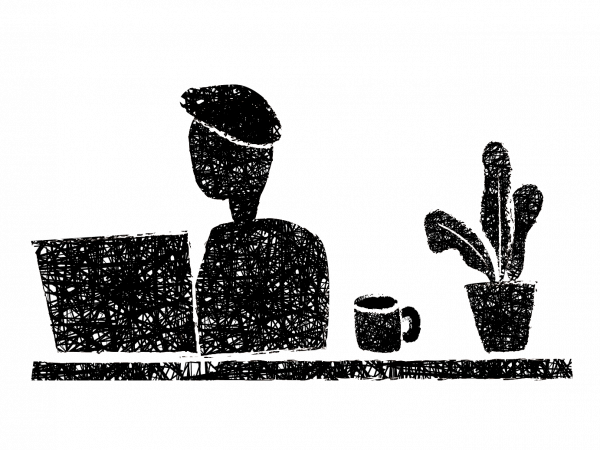- Home
- EN
- Our impact
- ProspeKtive
- The office of tomorrow? It's not win !

The office of tomorrow? It's not win !
November 2021
Expert
New office occupancy patterns - often flex office - are shaking up the real estate industry and contradicting each other on eco-responsibility issues. This transformation, writes Kardham's associate director, will be more complicated than it looks ...
Tribune published in Les Echos.
The consecration of teleworking caused by Covid-19, associated with a low office occupancy rate, has exploded the demand for so-called flex office type arrangements. Where usually 75% of surfaces were allocated to individual workstations and 25% to meeting rooms, the mix trend is now reversed with 50-50, or even more, for collective spaces.
With, as a corollary, the fact of having to operate a major cultural transformation: to re-enchant the office. Because if we go to the office, we must now have a good reason to go there, because something must necessarily happen there, because we want to be able to have fluid access to resources and services, because we want to be able to work together, in collaborative spaces.
In short, in the real estate industry as has been the case elsewhere before, it is now a question of putting the user experience back at the center of attention to win the war for talent.
Service platform
This change of paradigm leads to another, that of having to move from inventory management (square meters, workstations) to flow management (people, data). More hybrid, more collaborative and more technological, the physical building is now seen as a service platform (BaaS) focused on user experience and work called "Atawad" ("Any Time, Any Where, Any Device"). It is also a data platform that must be able to be managed, including to optimize the energy management of the building.
For example, the operator should be able to anticipate low office occupancy at certain times of the year and concentrate the flow of his audiences on just one part of the building to save energy. This therefore means deploying tools to anticipate and respond to new uses, but also knowing how to speak the same language in an industry which today remains very silenced.
New standards
The evolution of uses also re-examines all the usual building standards: formerly only accessible to its employees, the company must now be designed as an establishment open to all audiences.
Employees, partners, customers and individuals who will generate more and more traffic in these new, increasingly open trading platforms. This means, among other things, moving from a labor code building legislation to an ERP legislation (establishment open to the public) and therefore from a relatively simple regulation in terms of production and building engineering to a much more complex and restrictive regulation.
Increasing the number of meeting rooms also means resizing the air handling systems and therefore having to adapt to many new obligations in terms of heating, ventilation and air conditioning that consume much more energy.
In addition, the all-out digitization of buildings, by multiplying the layers of equipment, can increase their environmental impact even as the context calls for restraint.
Contradictory injunctions
As we can see, the office of tomorrow is fraught with contradictory injunctions between new societal and regulatory expectations and environmental realities. While digitization is to be seen as a lever for meeting new user challenges, it will therefore be a question of measuring the benefit / impact ratio at each stage. Impact on usage, user experience, but also in terms of environmental footprint.
The office of tomorrow is also questioning this historically standardized building system. This is the case, for example, with the famous 1.35 meter grid that has rocked all the architects of the tertiary industry until now. What is the point of maintaining this grid in a world where office partitions fall while a 1m50 grid could offer an improved carbon footprint?
In the end, if the expectations relate to a more collaborative and unmanaged networked company, to more meaningful, more community-based, more identifiable and more responsible offices, all that remains is these expectations which are increasingly complex to manage for owners, operators and users.
Release date: November 2021



